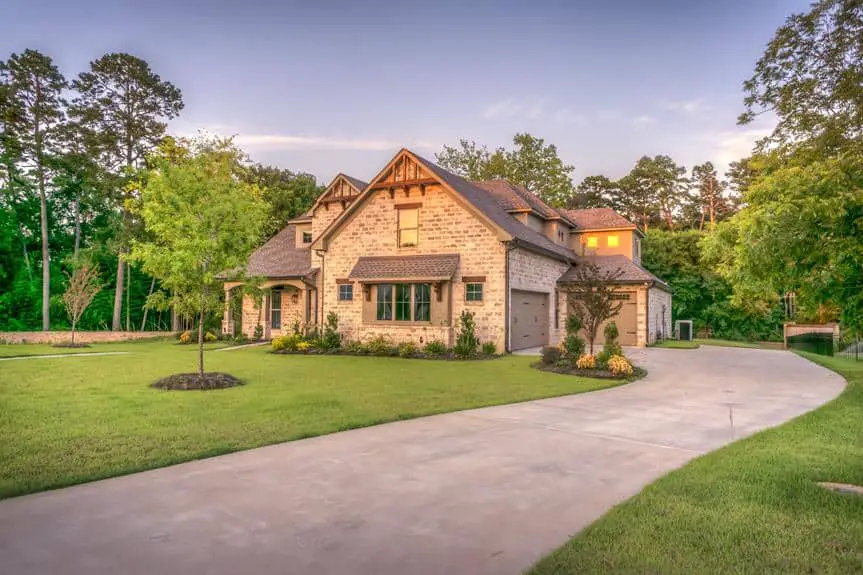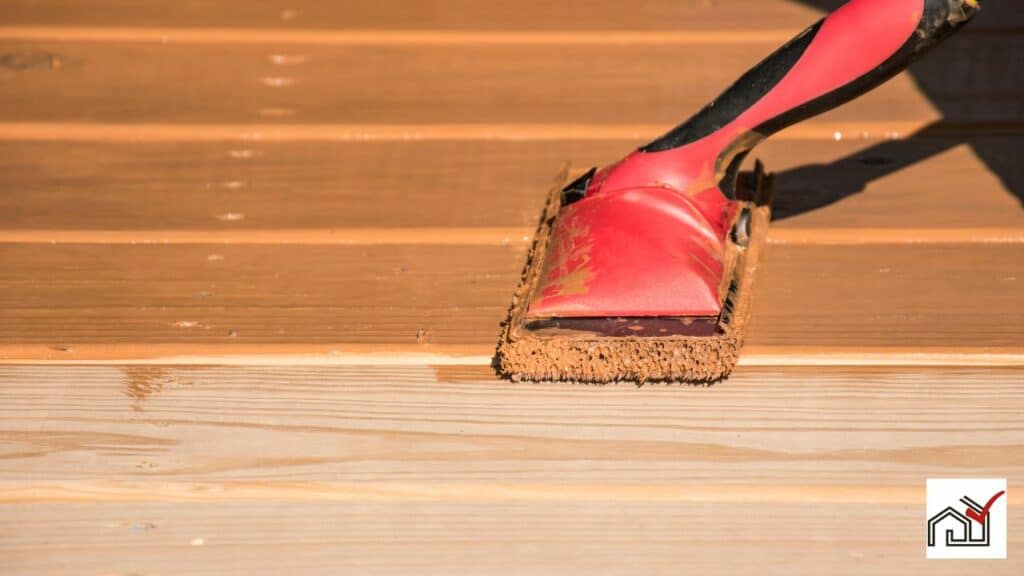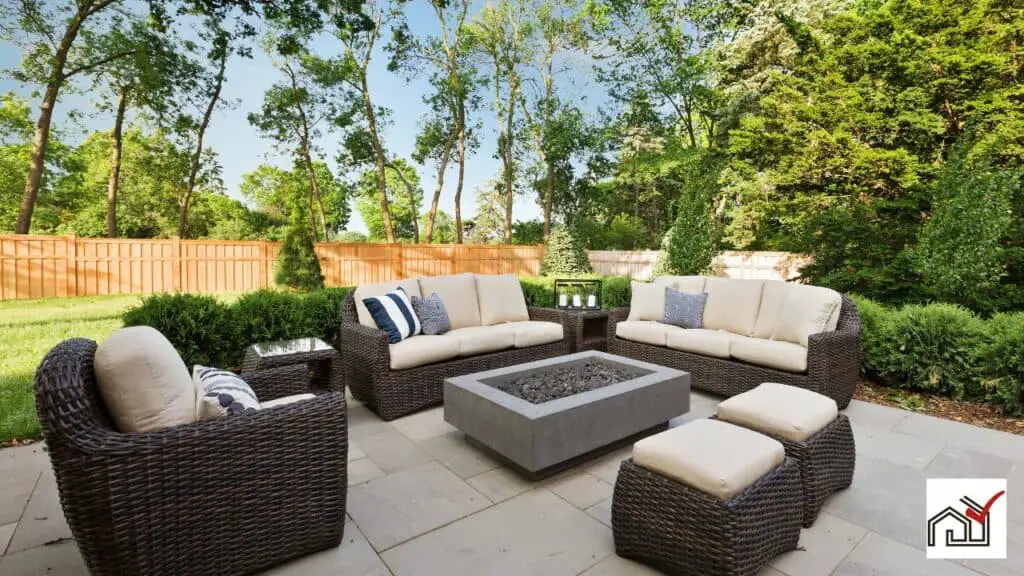When choosing how to finish outdoor wood, consider staining or painting.
Staining enhances wood's natural look and protects without changing its appearance much.
Painting covers the wood with a durable layer, available in many colors, and gives a consistent look.
Each method requires different maintenance and lasts for varying periods.
Evaluate the local environment and your preferences before deciding on the most appropriate finish for your wood surfaces.
This guide will outline the practical and aesthetic factors of staining and painting to help you make an informed choice.
Understanding Paint Basics
Paint is a substance used on outdoor wooden surfaces to improve their appearance and provide protection. Exterior paint is specially made to resist weather conditions and prevent damage from sun, moisture, and temperature changes.
Surface preparation is essential for effective painting. This includes cleaning, sanding, and removing any old finishes or debris. Proper preparation ensures the paint adheres well and lasts longer. After preparing the surface, a primer is applied, which helps the paint stick to the wood and adds an additional protective layer against moisture and pests.
Once applied and dried, the paint forms a protective barrier that helps extend the wood's lifespan by guarding against UV rays and moisture. The paint also covers surface imperfections, enhancing the wood's overall look. Over time, exterior paint may chip and wear away, so regular maintenance is needed. Adequate ventilation is important when painting to ensure the safety of the person applying the paint and to help the paint dry more quickly.
Advantages of Painting
Painting outdoor wooden surfaces offers strong protection and enhances their appearance.
Paint acts as a barrier against moisture, UV rays, and insects, helping to prevent rot and warping. It also allows for a wide choice of colors and finishes, enabling personalization and the ability to highlight architectural features.
Paint covers wood evenly, hiding flaws for a smooth look. It is practical and easy to apply, often requiring less preparation than staining, making it a preferred choice for both DIYers and professionals for quick and effective results.
Disadvantages of Painting
Painting outdoor wooden surfaces has several disadvantages. It tends to chip easily, requiring frequent upkeep. Preparing a painted surface for a new coat involves scraping and sanding off old paint, which is time-consuming and strenuous. This step is crucial to prevent peeling and ensure the new paint sticks well, but it increases labor costs.
Over time, painted surfaces often need more touch-ups and repainting than stained ones, leading to higher cumulative costs for paint, supplies, and labor. Thus, staining can be more cost-effective for long-term maintenance.
Additionally, painting limits aesthetic choices. Although it offers a variety of colors, it hides the wood's natural grain and texture. Stain, however, enhances the wood's appearance, showing its grain and texture, which is preferred for a natural look in outdoor spaces.
Essentials of Wood Staining
Understanding how to stain outdoor wooden surfaces involves preparation, application, and maintenance for a lasting and attractive finish. Before staining, the wood must be cleaned, sanded, and stripped of any old paint or finishes, allowing the stain to absorb properly and ensuring the longevity and appearance of the project.
When applying stain, choose between solid stain for an opaque look that still reveals wood texture, or other types which can enhance the wood's natural beauty by highlighting the grain. A consistent application of stain is key for the best outcome. Multiple coats may be needed for the desired color depth, with each coat requiring sufficient drying time.
Maintenance is necessary for stained wood surfaces. Although the stain's color is typically permanent, the finish needs regular cleaning and occasional reapplication to maintain the wood's condition and look.
Benefits of Staining
Staining outdoor wood surfaces has several benefits, including being cost-effective, offering a variety of colors, and providing better protection for the wood. Staining is generally cheaper than painting, making it an economical choice for updating and preserving outdoor items. The range of stain colors available allows for various design options, while still highlighting the wood's natural beauty.
Staining enhances the appearance of wood grain, which is appealing for those who prefer a natural wood look. It also penetrates the wood deeply, providing a strong defense against environmental damage. Stained wood weathers more evenly compared to painted wood, which can chip or peel.
Applying stain is straightforward, making it accessible for do-it-yourself enthusiasts. Maintenance is simpler as well, since stained wood typically does not require old layers to be removed before reapplication, unlike peeling paint.
However, it's necessary to consider that staining may need to be done more frequently than using the most durable paints. Still, for those who value the look, low maintenance, and affordability, staining is an excellent choice for outdoor wood surfaces.
Drawbacks of Staining
Staining outdoor wood surfaces has its disadvantages, such as limited durability, which leads to more frequent maintenance. Stains may improve wood's natural look, but they offer weaker protection than paint, necessitating regular reapplication.
Stains cannot be applied over painted surfaces. To stain a previously painted wood, all the old paint must be removed, increasing the workload and time required for the project.
The color and finish options for stains are also limited. This can be inconvenient for those trying to achieve a specific style or match their existing outdoor decor, as paints offer a wider variety of colors and finishes.
Applying stain usually involves multiple coats for even coverage and proper protection, with significant drying time between coats. This can prolong the completion of the project, especially in unpredictable weather conditions.
Making the Right Choice
When choosing between staining and painting outdoor wood, consider the wood's condition and your desired look. Staining is suitable for a natural appearance, enhancing wood grain and texture while offering protection. It's less durable against UV rays but easier to apply and maintain, especially on large areas like decks.
Painting hides wood imperfections and provides a durable layer against the elements, with a wide color selection. Paint may chip over time and usually requires more maintenance.
Decide between paint and stain by considering appearance, wood condition, maintenance needs, and cost for long-term outdoor wood care.
Maintenance and Care Tips
Maintaining outdoor wooden surfaces is essential for their durability and appearance. Stained wood fades slowly, requiring less frequent maintenance. Regular inspections to detect wear or dullness can indicate the need for re-staining, which does not require stripping the old layer.
Painted wood is easy to clean and should be kept free of dirt. Any chips or peeling should be fixed quickly to avoid moisture damage, which can cause rot. Repainting painted wood typically involves sanding and priming before applying new paint.
For both stained and painted wood, regular cleaning is important to prevent grime buildup. Check for mold, mildew, and structural damage, and seal any gaps to stop water from entering.





